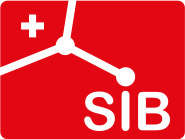Glossary
Special | A | B | C | D | E | F | G | H | I | J | K | L | M | N | O | P | Q | R | S | T | U | V | W | X | Y | Z | ALL
A |
|---|
activatorA protein that increases the production of a gene product in DNA transcription. | |
C |
|---|
ChIP-SeqChromatin immunoprecipitation followed by sequencing. This central method in epigenomic research allows genome-wide analysis of enhancers and chromatin state. | |
chromatinThe material which makes up the chromosomes of organisms other than bacteria (i.e. eukaryotes). Chromatin is composed of protein, RNA, and DNA. | |
E |
|---|
I |
|---|
immunohistochemistry (IHC)Method that uses antibodies to check for certain antigens (markers) in a sample of tissue. The antibodies are usually linked to an enzyme or a fluorescent dye to visualize where they bind. IHC is used to determine the tissue distribution of an antigen of interest in health and disease. | |
M |
|---|
micro-RNA (miRNA)Micro-RNA (also written as microRNA) is a small (about 22 nucleotides) single-stranded non-coding RNA molecule. miRNAs function via base-pairing with complementary sequences within mRNA molecules to RNA to silence and post-transcriptionally regulate gene expression. | |
microarrayMethod used to detect the expression of thousands of genes at the same time. Microarray experiments allow description of genome-wide expression changes in health and disease. | |
P |
|---|
promoterRegion of DNA upstream of a gene where proteins (such as RNA polymerase and transcription factors) bind to initiate transcription of that gene. | |
promoteromeAll the genetic promoters of an organism. | |
R |
|---|
repressorA protein that inhibits the expression of a gene product in DNA transcription. | |
RNA-seqDetection and quantitative analysis of messenger RNA molecules in a biological sample. RNA-seq allows description of the transcriptome, which is key to connect the information in a genome with its functional protein expression. | |
T |
|---|
three prime untranslated region (3′-UTR)Region of messenger RNA (mRNA) that immediately follows the translation termination codon. The 3′-UTR often contains regulatory regions that influence gene expression post-transcriptionally. | |
transcription factor (TF)A protein that binds to a specific DNA sequence and regulates gene expression by promoting or suppressing transcription. Transcription factors bind to either promoter or enhancer regions adjacent to the genes that they regulate. | |
transcriptomeThe set of all RNA transcripts, including coding and non-coding, in an individual or a population of cells. | |
